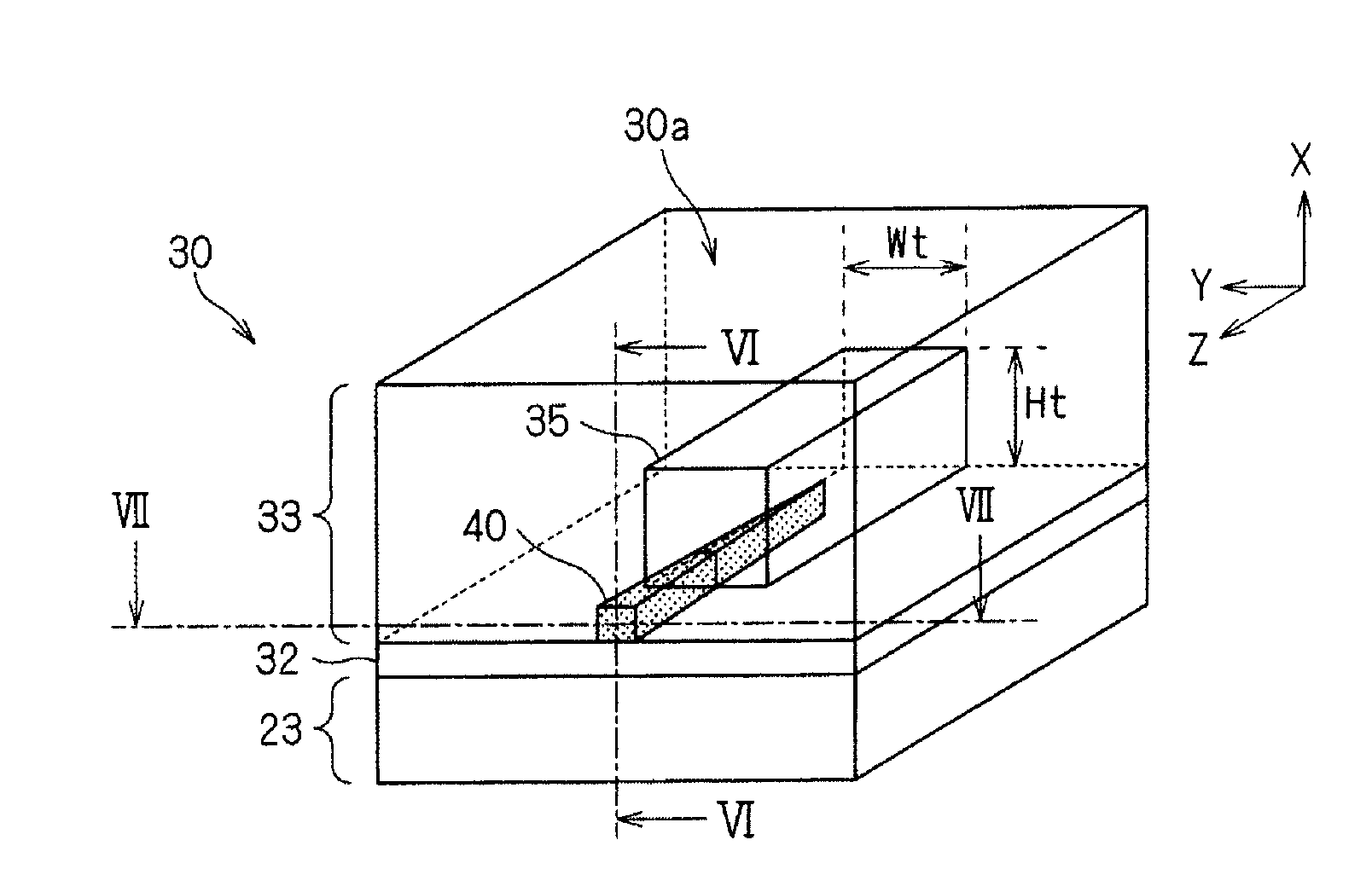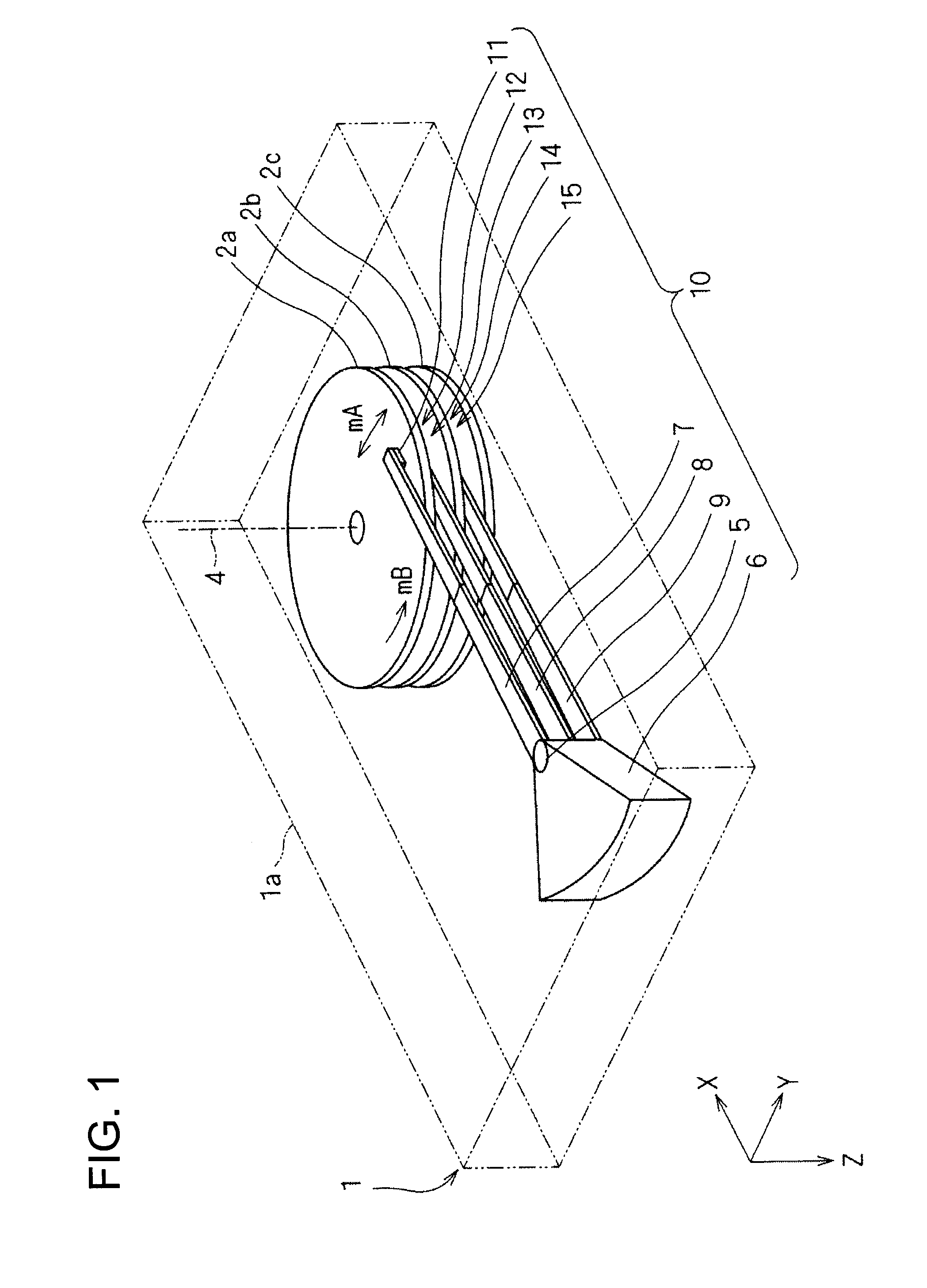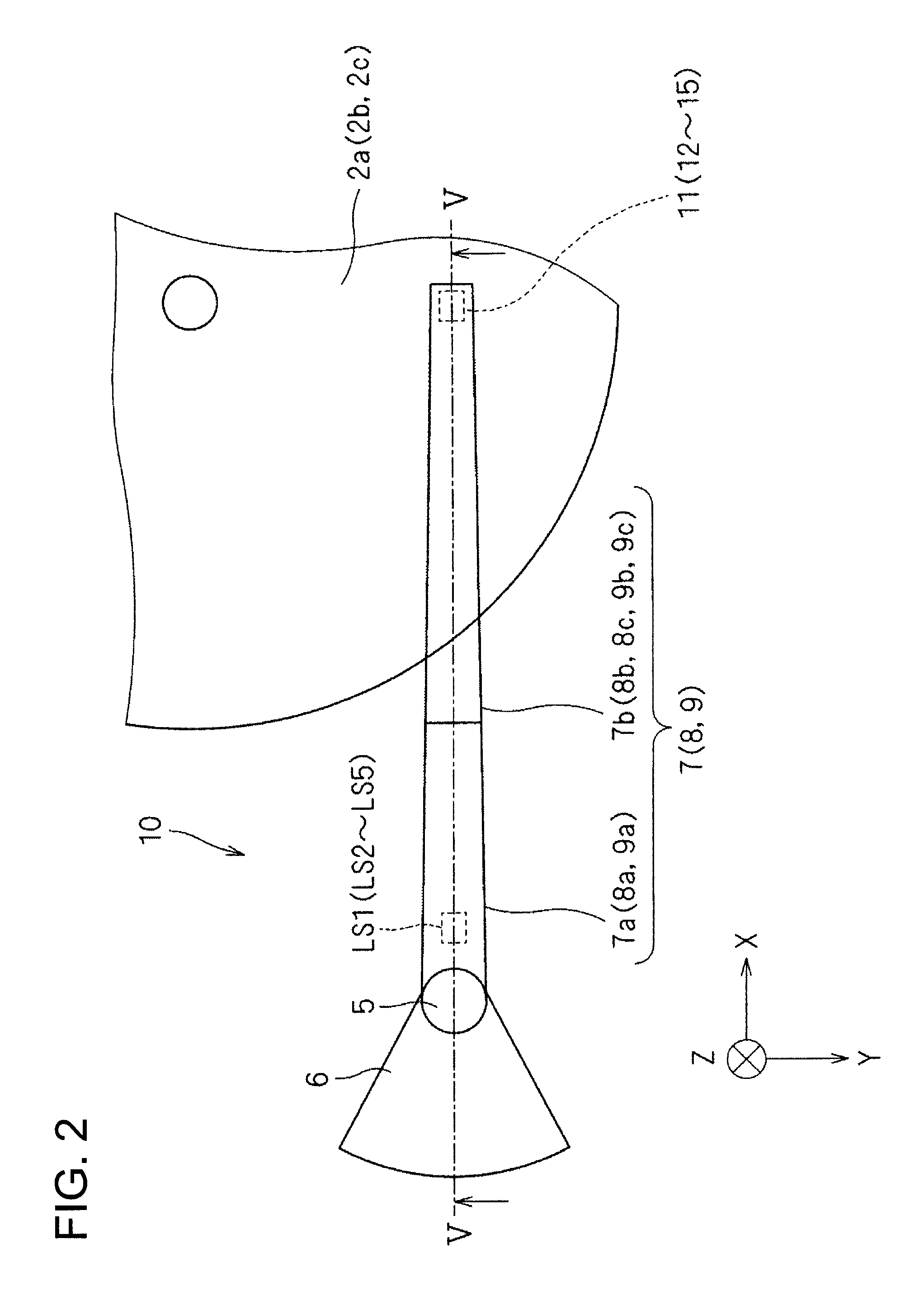Near-field light emitter, light-assisted magnetic recording head and light-assisted magnetic recording device
- Summary
- Abstract
- Description
- Claims
- Application Information
AI Technical Summary
Benefits of technology
Problems solved by technology
Method used
Image
Examples
Embodiment Construction
[0079]Referring to the drawings, embodiments of the present invention will be detailed in the following.
1. Configuration of Light Assisted Magnetic Recording Apparatus
[0080]FIG. 1 shows a schematic diagram indicating a perspective view of an exemplified structural configuration of a light-assisted magnetic recording apparatus 1 embodied in the present invention. The light-assisted magnetic recording apparatus 1 serves as a magnetic information recording apparatus employing the thermal assisting method, and is available as the HDD (Hard Disc Drive), so to speak. Further, a high coercivity material is employed for the recording medium to be incorporated in the light-assisted magnetic recording apparatus 1.
[0081]In this connection, when magnetic information recorded onto the high coercivity material is to be rewritten, in the light-assisted magnetic recording apparatus 1, light is irradiated onto a local area within the recording surface of the high coercivity material, so as to give a...
PUM
 Login to View More
Login to View More Abstract
Description
Claims
Application Information
 Login to View More
Login to View More - R&D
- Intellectual Property
- Life Sciences
- Materials
- Tech Scout
- Unparalleled Data Quality
- Higher Quality Content
- 60% Fewer Hallucinations
Browse by: Latest US Patents, China's latest patents, Technical Efficacy Thesaurus, Application Domain, Technology Topic, Popular Technical Reports.
© 2025 PatSnap. All rights reserved.Legal|Privacy policy|Modern Slavery Act Transparency Statement|Sitemap|About US| Contact US: help@patsnap.com



